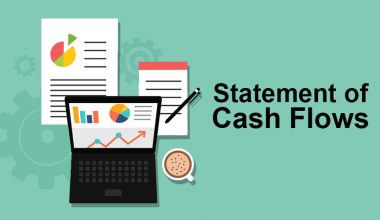Whenever a business is owed money for services provided or items sold, a receivable is generated. This might result from a sale to a client on store credit, a subscription or installment payment that is due after the client receives the goods or services, or another circumstance. Here, we’ll explain how accounts receivable functions, how it differs from accounts payable, and how good accounts receivable management helps pay you more quickly.
Receivable
Receivables, also called “accounts receivable,” are debts that customers owe a business for goods or services they have used or received but have not yet paid for.
These receivables are as current assets on a company’s balance sheet. you can make receivables when you give clients a line of credit. They are liquid assets because they can be used as collateral to get a loan to help pay for immediate costs.
The working capital of a business includes receivables. If a customer hasn’t paid, follow up with them right away, and if required, evaluate payment arrangements. This is all part of effectively managing receivables. Due to the fact that it lowers the organization’s net debt and provides more funds to fund operations, this is crucial.
How to Manage Receivables
Credit granting is exceedingly dangerous. This is due to the fact that transactions do not always complete simultaneously. Furthermore, not everyone can be trustworthy and make timely payments, as we all know. We’ve put together the following tips just for you so that you can manage your receivables well.
#1. Exercise Receiving Control
Setting guidelines can help with receivables control. You may follow the following regulations:
- Qualifications for People or Businesses That May Be In Debt
- Some restrictions apply to the book rate value, the maturity period, and the payment schedule.
- Reduce the Maturity Period to Prevent Rejecting Potential Debtors with a Default History
#2. Enacting the Receivables Agreement
Make sure the agreement between the two parties is written down in black and white and includes all relevant terms in order to prevent bankruptcy or other undesirable outcomes.
#3. Often Carrying out Bookkeeping
You can better track the turnover of receivables by performing bookkeeping on a regular basis. Exist any outstanding debts or other issues? Without a doubt, you don’t want to lose.
#4. Establish a Separate Receivables List.
Each customer receives an accounting record, including the mutation of accounts receivable known as the special list of accounts receivable, or more commonly, the credit card.
#5. Thoroughly Examining the Turnover of Accounts Receivable
You can put stronger rules in place by analyzing your current receivables turnover. Because a new policy must be implemented right away if current gains continue to last for a long time after the allotted period.
Account Receivable
The amount owed to a business for goods or services that have been delivered or utilized but for which consumers have not yet made payment is known as accounts receivable, or AR. A current asset is defined as accounts receivable on the balance sheet. Any sum that clients owe for purchases they made with credit is considered AR.
The phrase “accounts receivable” refers to any unpaid invoices or cash that customers owe a business. The phrase refers to accounts that a business is qualified to receive as a result of providing a good or service. Receivables, also known as accounts receivable, are a type of line of credit that a business extends to customers. Often, the terms of receivables stipulate that payments must be made within a reasonable amount of time. Accounts receivable are also considered current assets because the debtor must pay the account balance in a year or less. When a business has receivables, it signifies that it has made a credit sale but has not yet received payment from the customer. It may be said that the client has given the business a short-term IOU.
Accounts Receivable vs. Accounts Payable
Accounts payable are debts that a business owes to its suppliers or other stakeholders. In comparison to accounts receivable, accounts payable exist. In order to provide an example, consider the scenario where Company A cleans Company B’s carpets and then issues a bill. The invoice is entered in the accounts payable column since Business B owes them money. The bill is entered in the AR column by Business A since it is awaiting payment.
Accounts Receivable Benefits
The fundamental examination of a corporation includes accounts receivable as a key component. Accounts receivable, a current asset, is a measure of a company’s capacity to meet short-term obligations without the need for additional cash flows.
Fundamental analysts use the term “accounts receivable turnover,” also known as “the ratio of accounts receivable turnover,” to describe how frequently a company collects on its balance of accounts receivable over the course of an accounting period. Counting the average number of days it takes to collect payment after a sale has been made, known as days sales outstanding (DSO), would be a further research step.
Example of Accounts Receivable
One example of accounts receivable is a utility firm that bills its customers after they have used the electricity. While it waits for its consumers to pay their bills, the electric company registers an account receivable for any overdue invoices.
Most businesses function by permitting some of their sales to be made on credit. Businesses sometimes give this credit to regular or special customers who buy goods or services regularly. Customers can save time and trouble by using this method instead of physically paying for each transaction. The possibility of paying after obtaining the service is commonly made available to customers by some firms.
Accounts Receivable Job Description Guide
Making sure that their business receives payments for the goods and services it provides and recording these transactions appropriately is the primary responsibility of an employee in the accounts receivable department. Securing revenue entails checking and posting receipts, as well as addressing any inconsistencies, according to the job description for accounts receivable. Being organized and having a good eye for detail will be necessary for this position in order to identify any potential problems.
Tasks and Obligations of the Position in Accounts Receivable
The following list is not complete, but it should be part of a standard job description for accounts receivable:
- keeping the billing system in good shape
- create invoices and account statements
- reconciliations of accounts
- generating monthly financial and management reports
- any issues or inquiries being looked into and resolved
- helping with analysis and management of the overall financial situation
Accounts Receivable Job Qualifications and Requirements
For a job in Accounts Receivable, you need to have experience with accounting, but you don’t need a bachelor’s degree. Still, a candidate can move up in their accounting career with a degree in one of the following:
- Accounting
- Economical or Financial
- Business studies or management
- Mathematics
The following competencies are necessary for an Accounts Receivable position:
the capacity to set priorities and control expectations
- attention to detail
- an aptitude for working alone
- the capacity to communicate with other company members clearly and effectively
- an understanding of mathematics
Account Receivable Process
Even though the accounts receivable process varies from business to business, we’ve outlined some typical elements that you’ll encounter in the procedure used by the majority of enterprises.
- Invoicing the client on credit in accordance with the credit policy
- the credit days or due date being captured or recorded
- Schedule for investigation and collection
- creating the past-due bills and the ones that have been waiting for a lengthier period of time
- sending a letter of reminder with information on the outstanding debts
- Accounting for the payment upon receipt and updating the receivables as necessary.
- If there is a cash discount for early payment, the receivables account must be adjusted appropriately.
What Are Examples of Receivables?
What are examples of receivables? A receivable is a sum of money due to a company for goods or services that have been delivered but have not yet been paid for. This can result from a sale made to a consumer using shop credit, a subscription, or an installment payment that is due after receiving the products or services.
Is Receivable a Debit or Credit?
Accounting’s fundamental idea is that debit represents assets and credit represents obligations (something you owe).
Accounts receivable are always listed as assets on a balance sheet, causing a debit. Accounts receivable are one of your first or current assets since you expect payment shortly (i.e. in one year or less). Trial balances charge accounts receivable until payment.
The money is now in your bank and is no longer owing to you; therefore, once the customer has paid, you will credit accounts receivable and debit your cash account.
Your trial balance typically shows a debit for the ending balance of accounts receivable.
Is Account Receivable an Asset?
The ability to quickly turn accounts receivable into cash makes them an asset in the accounting ledger of the company. AR is standard in business. These are purchases for which no money has yet been given. When the transaction was completed, the customer had not yet made a payment for the commodity or service. I
Instead, the corporation gave the client credit and expects payment later. Company convertible assets are AR. They define a financial asset that can be swiftly converted into cash after the customer pays.
Assets are usually categorized as current or non-current. Liquid assets can be turned to cash in less than a year. Accounts receivable collection usually takes two months. They are considered “short-term” assets.
What Type of Asset Is Receivable?
Since they often turn into cash within a year, receivables are seen as a current asset. It will be noted as a long-term asset when a receivable converts more slowly than a year. Instead, it gauges a company’s liquidity, or its capacity to pay short-term debts without the need for further cash flows.
Is a Receivable a Debt?
Receivables are the opposite of debt in that the latter is an obligation to pay for goods or services received. Receivables are our ownership interests in other people’s property. Money, products, or services are all acceptable payment methods for this right.
Conclusion
Accounts receivable are a key part of the balance sheet, so it’s important to keep track of them well. A business, however, would not want to have an excessive amount of it. An organization’s inability to collect payments on time or difficulties doing so are indicated by a high accounts receivable balance. Whilst it is a valuable asset, accounts receivable isn’t necessarily a desirable thing. If you’re consolidating debt by taking on new obligations or if your clients are tardy in making payments, AR could become a liability. On the other side, if you have extremely lucrative clients, they will probably pay up quickly and readily because they have money to burn!
Related Articles
- Accounts Receivable: Examples, Process, Formula & Free Tips
- RECEIVABLES: Meaning, Account Turnover, Examples & Difference
- Managing Receivables: Policies For Receivables And Collection
- Accounts Payable vs Accounts Receivable Detailed Comparison






